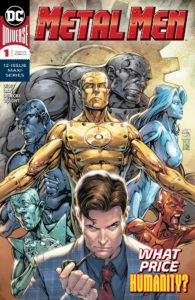
In advance of this new series — which will span 12 issues — The Beat had a chance to sit down at NYCC with the duo, discussing everything from Davis’ artistic influences for the book to DiDio’s real favorite DC characters (like a good parent, he has to say he loves them all equally, but, come to find out, that simply isn’t true…). The Metal Men first debuted in DC Comics back in the early ’60s, and the new book works hard to honor their long history while incorporating newer events from recent continuity, specifically Nth Metal, which was prominent in the event story, Dark Nights Metal.
Anyway, check out our conversation with DiDio and Davis below!
The Beat: So, let’s talk Metal Men…what drew you both to these characters?
Dan DiDio: You know, it’s funny. I get asked this question a lot — ‘What are my favorite characters?’ — and I’ve always been altruistic in saying, ‘All of them are my favorite characters.’ In reality, the Metal Men have been my favorite characters. I’ve been a fan of them for a long time, and I had a chance to write them for Wednesday Comics a few years back. I really enjoyed it, and I have a big story I wanted to tell with these characters.
We’re doing a lot of interesting exploration with them, and with all our characters recently. I think we have a good story for Metal Men, and that’s why I reached out to Shane [Davis]. I thought he’d be the best artist for them, that he’d really be able to bring an expressive nature to the characters and the transformations.
The Beat: Shane, with drawing the Metal Men can you talk a little bit about references and how you shape those characters since they’re not quite rooted in reality?
Shane Davis: A lot of it has to do with the modeling. With the metallics, I use a lot of rim lighting, which is basically reflective light coming from all around. I always keep their metallic sheen holding to the contours of their faces. I draw the faces normal, but then I’m basically modeling them differently. It’s a weird effect, but I like it.
I got into comics reading Silver Surfer a lot, and I was a big fan of Metal Men. I always liked the idea of drawing metallics as a kid, as weird as that is. You wouldn’t think it, but there’s a lot of characters like that that I liked — Metal Men, XO-Manowar, Silver Surfer — as a kid.
DiDio: I hate when you say you liked those characters as a kid, by the way, especially XO-Manowar [laughs].
Davis: But Terminator 2 was big for me. I’ve had arguments about whether T-1000 was a ripoff of Metal Men. To me, I thought it was the same thing. So, when Dan presented it to me, I thought it was awesome that I get to check this box. I look at comics projects like that a lot, what are the things I want to checkoff in my career? And I’ve had pressures of drawing Superman before, and I like the idea that there’s no pressure on this, except Dan’s pressure [laughs].
DiDio: I ask him to do a lot. We’re having some real fun with this. We’re introducing a new character called the Nth Metal Man, picking up from the Metal series we had a few years back. That was fun to do because putting a new character in, it changes the dynamic of the team, and there’s a lot of things we’re going to do that transform the team during the course of the storytelling. To me, it’s a story about exploring what true humanity is and what is sentient and what’s not sentient, and ultimately how these characters have the sensibilities of being human but what does it truly mean to be human.
The Beat: I heard you draw a Westworld comparison the other day, and you talked a little bit about how comics can reflect what’s happening in the world…
DiDio: Absolutely. Comics also can be a reflection of pop culture, and I thought what they did with Westworld was really interesting, about constructs that had been brought to the edge of sentience without truly being there. We’re bringing a similar sensibility to Metal Men. They have such rich history, but what are their personalities, what are they based on, what does it take to be really human? That’s the heart of the conversation. It’s about relationships, and, ultimately, what you find in yourself and your own humanity.
The Beat: How much are both of you drawing from past Metal Men stories?
Davis: I use a lot of referencing from the old material. I was going through the DC Archives stuff. I don’t know how far I went into that. Maybe one and two.
DiDio: I’m always asking for the crazy robots, and Shane’s really able to bring a nice modernization to it, which is exciting for me. Not only that, but we brought back characters from the early runs, which are things like the Giant Manta or the Missile Men. Later on, Chemo will show up…that just seems natural. On top of that, the intriguing thing is we’ve got this interesting double-page spread that really explores all the different interpretations of Metal Men and the designs over the years, and it contextualizes that as well.
The Beat: Like a visual evolution?
Davis: He kind of explains the whole thing for old readers and for new readers all in one shot, which was really impressive that somebody was able in one shot to explain everything, even though it seems simple.
DiDio: I love books like what Geoff [Johns] did with Green Lantern: Rebirth. I always use that as an interesting template to modernize a character by looking throughout their entire history, and not to discount things but to ultimately recontextualize them in a way that makes sense for the bigger story. That way you can get to a new spot while you also pay tribute and understand everything that came before. That way, if a fan has been a fan of any different interpretation, they’ll follow you into the story because at least you’ve given a tip of the hat to what they’ve liked in the past.
The Beat: From the panels I’ve been to this weekend, it seems like that’s becoming a guiding philosophy for the entire line.
DiDio: Absolutely. Yesterday we gave a little bit of a sneak peak of a timeline that we built. The trick is to get past the days of start and stop, meaning every time a reboot started, everything started fresh. Or, every time a new creative team comes on board, it’s a new interpretation, not much different from the one before, just somebody else’s version of it. I feel that you lose that connective tissue and the storytelling that comes with it. So, now we’re putting an extra onus on everyone trying to appreciate the material that came before them, and then hopefully present it in a way that feels continuous to that material without being slavish to it.
The Beat: Like the cliche, don’t throw the baby out with the bathwater…
DiDio: That’s 100 percent right. True.
The Beat: I know you said this book will tie to Metal, so is there going to be more connectivity?
DiDio: The heart of the story is the Nth Metal Man. We find out he comes from the Dark Multiverse. So, naturally the story is going to bring us back into the Dark Multiverse to find out his origin as well, and, in the meantime, the team goes through a transformation that basically puts them at a crossroads between which path do they want to follow: the one of Dr. Magus or the one of the Nth Metal Man.
The Beat: Anything else about the book you want to let readers know?
Davis: It’s fun. I was talking to Dan, we had Lead fighting another character I’m not going to name. They’re just trading blows, but it was a simple animation of his hands just forming different things, like a mace or a hammer, that really just made the punches feel more special than the average Batman-punching-Joker. I know that sounds weird, but there was another scene where a character was supposed to drive themselves through Nth Metal Man’s chest, or something, and it just happens quick. That was the beauty to me of coming on Metal Men. They turn into sometimes simple objects…but turning into these objects, it’s visually fun on paper and refreshing. That’s the one thing people will find from the book: these action sequences aren’t going to feel like your average comic book action sequences.
As a team, they would be a very special effects team. If they were a movie or a TV show, they would be all CGI objects, talking eyes and mouths.
The Beat: It seems like that would be liberating as an artist…
Davis: That’s what’s weird about it. Sometimes I do a throwback homage to the floating face on an object, but sometimes if the object works right, I put their face into the object. Bad example, because they don’t do this, but if they were a car, maybe their eyes would be the headlights and their mouth would be the bumper. So, when one turned into a screw, I was able to get his face into the head of the screw and it worked. Basically, I’m doing whatever is visually fun. That’s why I wanted to draw it. I can’t do this in another book. There’s no other book in the industry you can do this stuff with, unless it’s a team of Plastic Men.
DiDio: That’s what’s fun with Shane, he’s constantly challenging me to come up with other gags and he’s also coming up with gags himself. That way, we’re not repeating things and also coming up with unique bits that can be a signature for each one of the characters.


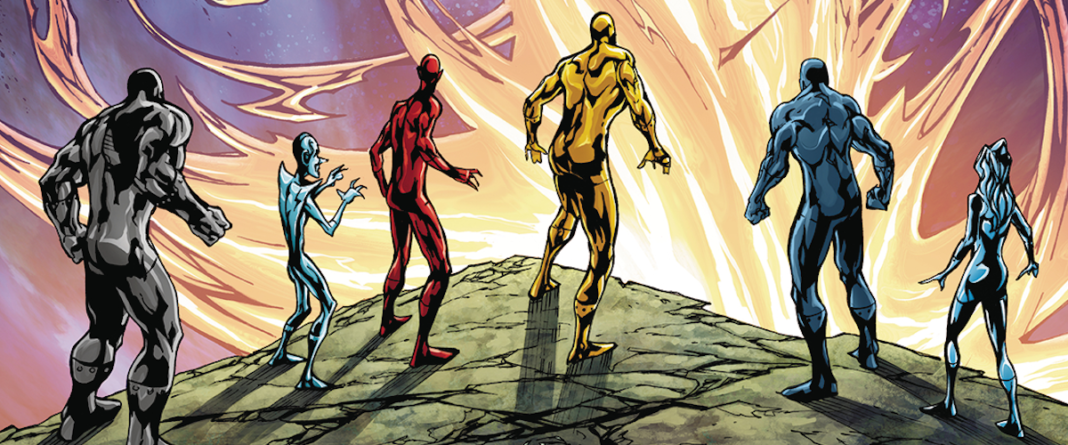
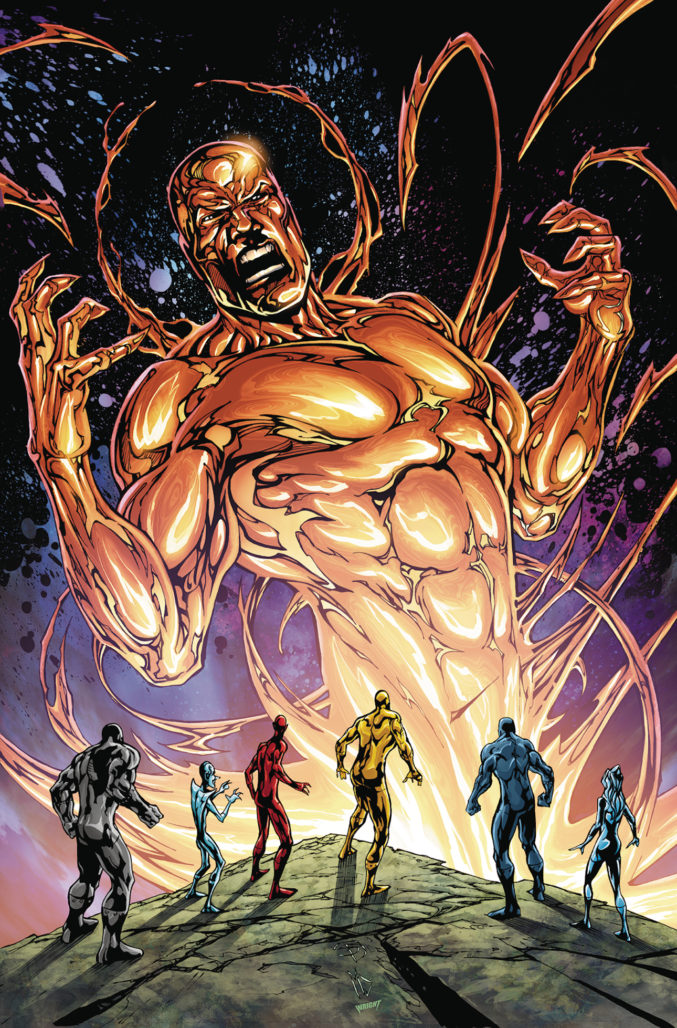
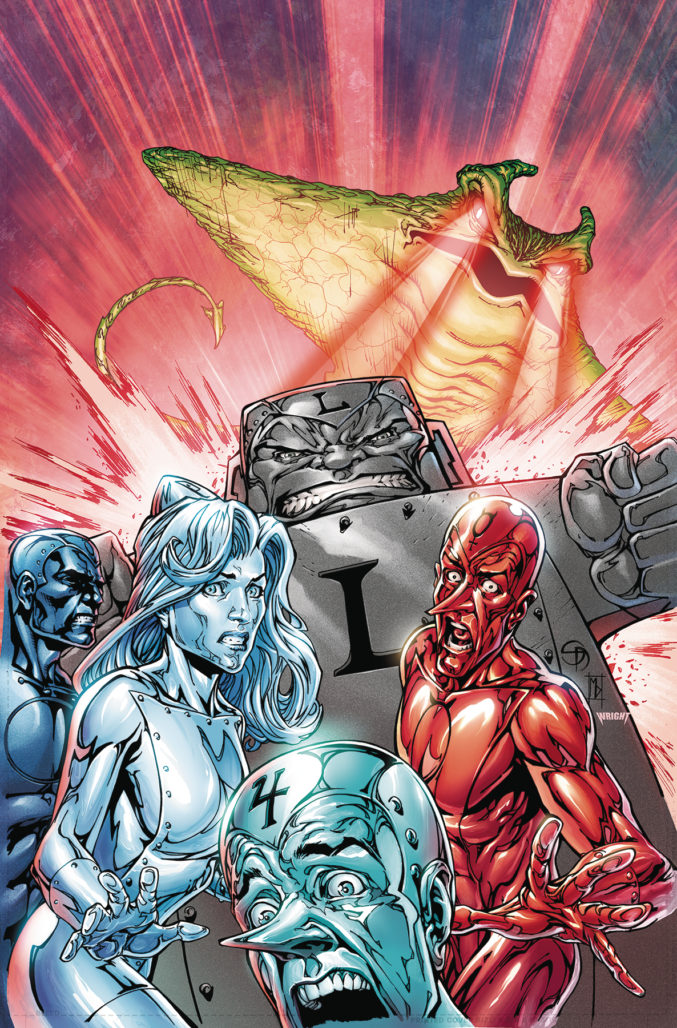

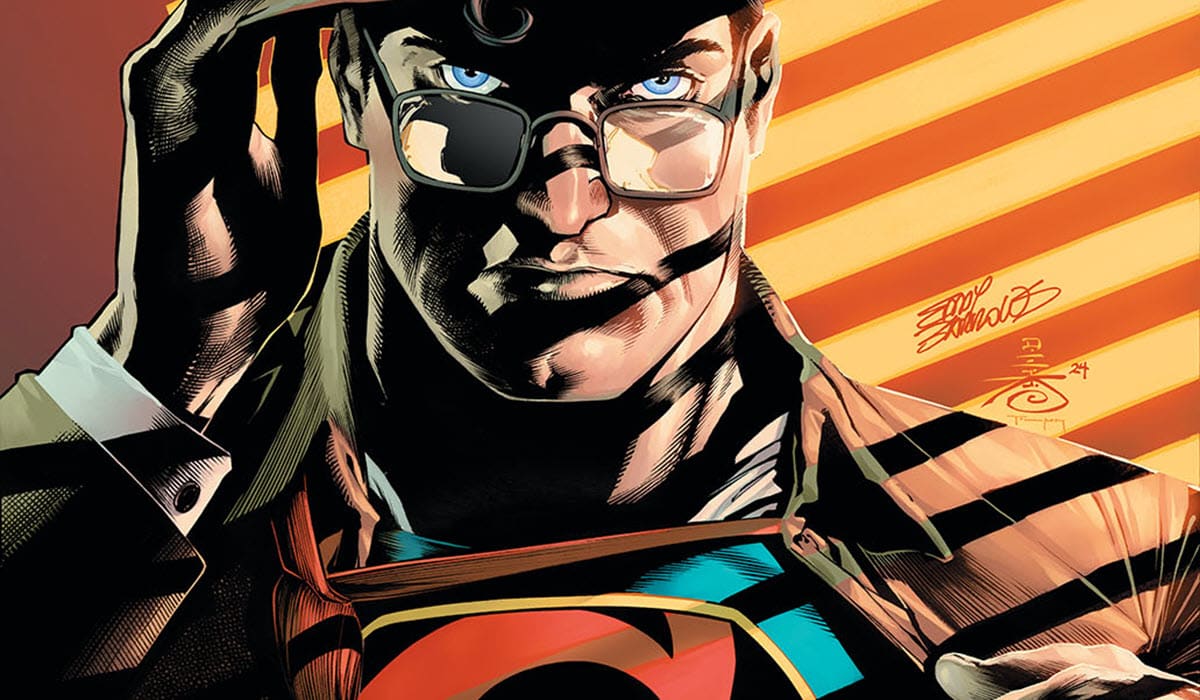
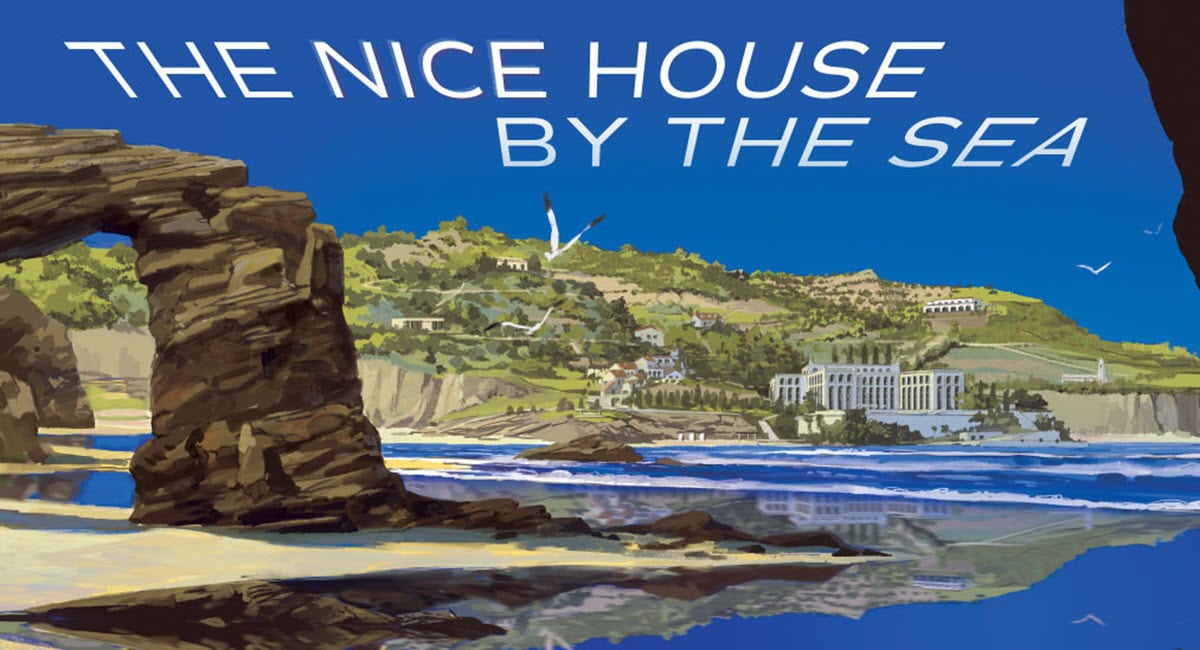


I was mildly curious about this and moved to immediate pass once I saw DiDio was the writer.
God, enough of the Dark Multiverse already!
Sorry but you are both wrong. Send in a script of your own. Let’s support and then teardown after you have actually read the book.
Comments are closed.